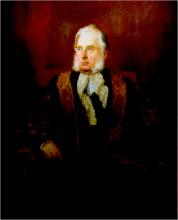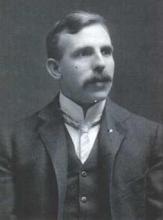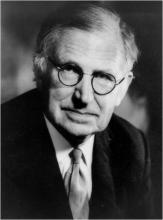The History of the Cavendish
The Cavendish Laboratory has an extraordinary history of discovery and innovation in Physics since its opening in 1874 under the direction of James Clerk Maxwell, the University's first Cavendish Professor of Experimental Physics. Up till that time, physics meant theoretical physics and was regarded as the province of the mathematicians. The outstanding experimental contributions of Isaac Newton, Thomas Young and George Gabriel Stokes were all carried out in their colleges. The need for the practical training of scientists and engineers was emphasised by the success of the Great Exhibition of 1851 and the requirements of an industrial society. The foundation of the Natural Sciences Tripos in 1851 set the scene for the need to build dedicated experimental physics laboratories and this was achieved through the generosity of the Chancellor of the University, William Cavendish, the Seventh Duke of Devonshire. He provided £6,300 to meet the costs of building a physics laboratory, on condition that the Colleges provided the funding for a Professorship of Experimental Physics. This led to the appointment of Maxwell as the first Cavendish professor.
Since its foundation, the Laboratory has had great fortune in appointing Cavendish professors who, between them, have changed completely our understanding of the physical world. Maxwell did not live to see his theories of electricity, magnetism and statistical physics fully confirmed by experiment, but his practical legacy was the design and equipping of the new Laboratory. Maxwell died in 1879 at the early age of 48 and was succeeded by Lord Rayleigh, who was responsible for setting up a systematic course of instruction in experimental physics, which has remained at the core of the Laboratory's teaching programme.
JJ Thomson succeeded Rayleigh in 1884 and began the revolution in physics which was to lead to the discovery of quantum mechanics in the 1920s. During Thomson's long tenure, the University allowed students from outside Cambridge to study for the new degree of Doctor of Philosophy in 1895. Among the first generation of physics graduate students were Ernest Rutherford and Charles Wilson, who, along with JJ Thomson, were to win Nobel prizes for their researches. The discovery of the electron by Thomson, the invention of the Cloud chamber by Wilson, the discovery of artificial nuclear fission by Rutherford are examples of the extraordinary advances in experimental technique which ushered in what became known as modern physics.
In 1919, Thomson was succeeded by his former student Rutherford, under whose tenure Francis Aston discovered the isotopes of the chemical elements, Patrick Blackett first photographed artificial nuclear interactions, James Chadwick discovered the neutron and John Cockcroft and Ernest Walton carried out the experiment which produced the first controlled nuclear disintegrations induced by accelerated high energy particles, as well as proving experimentally for the first time that E = mc2.
Lawrence Bragg succeeded Rutherford as Cavendish professor in 1938 and developed the use of X-ray crystallography as an extraordinarily powerful tool for understanding the structure of biological molecules. The culmination of these studies was the determination of the double-helix structure of the DNA molecule by Francis Crick and James Watson. The scope of physics continued to expand with the push to very low temperatures through research conducted in the Mond Laboratory and to very high energies with the construction of the next generation of particle accelerators.
Bragg was succeed by Nevill Mott in 1954 and under his leadership, many pioneering studies were carried out in what is now be termed condensed matter physics, including his own work on amorphous semiconductors which was to lead to his Nobel prize. The Laboratory continued to expand at a great rate until the site in central Cambridge became so overcrowded that a move to a new green-field site in West Cambridge, managed by Brian Pippard, Mott's successor as Cavendish Professor in 1971, was deemed necessary.
The move was completed in 1974 and a completely new phase of discovery began. Large facilities were developed in radio astronomy and semiconductor physics, which continue to be frontier areas of research within the Laboratory. Completely new disciplines were fostered. With Sam Edward's appointment as Pippard's successor in 1984, soft condensed matter became a major component of the Laboratory's programme. This led in turn to major initiatives in biological physics and the physics of medicine. Polymer semiconductor physics has flourished under Edwards' successor Richard Friend. In the first decade of the 21stcentury, new frontiers have been opened up in the areas of nanotechnology, cold atoms and ultra-low temperature physics.
The next phase of development is the reconstruction of the Laboratory to meet the challenges of the 21st century. The necessary major redevelopment programme continues the tradition of innovation and originality that has been at the heart of the Laboratory's programme since its foundation.
For more details of the history of the Laboratory, see the following links.
- The Crocodile Explained
- "A Hundred Years and More of Cambridge Physics"An electronic booklet originally produced by the University Physics Society in 1975.
- The Electron Centenary
- The Old Cavendish - 'The First Ten Years'
- The Present Cavendish - The Move to West Cambridge
- The Cavendish Professorship of Physics
- Nobel Laureates
- Cambridge Physics - Past, Present and Future: Part of the Cavendish Educational Outreach Office.



